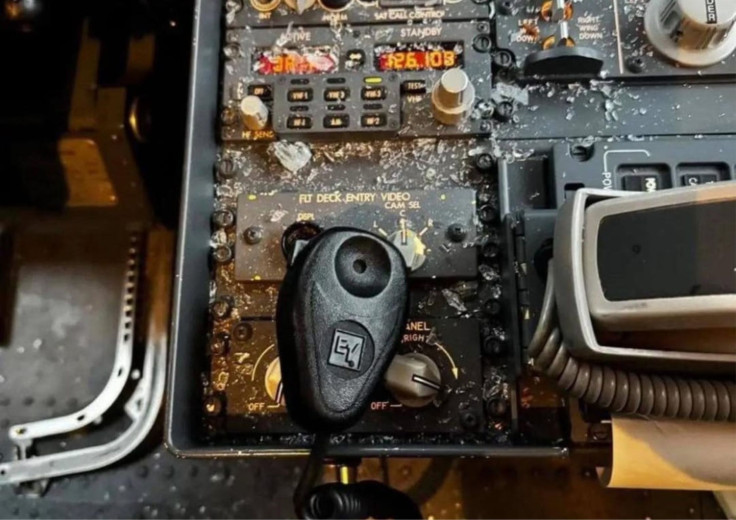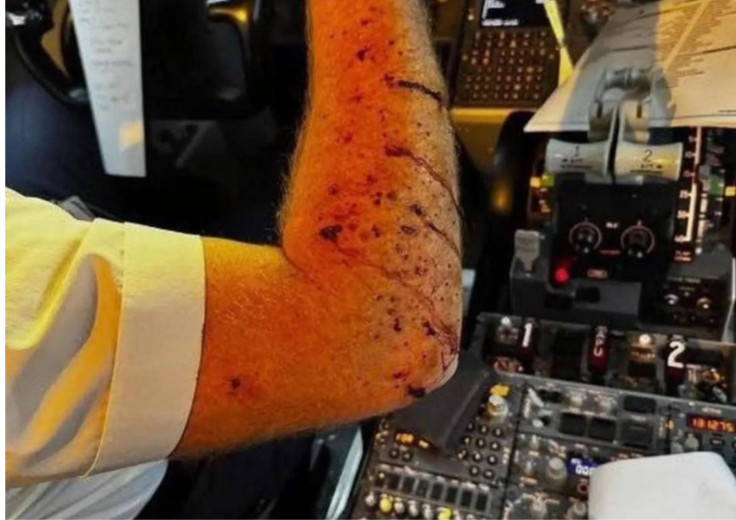What Hit the United Airlines Jet? Investigators Probe Object That Shattered Windshield at 36,000 Feet

Was it a meteor, weather balloon or space junk?
A United Airlines flight from Denver to Los Angeles was forced to divert after an unidentified object struck its cockpit windshield at 36,000 feet, cracking the glass and injuring a pilot. Officials now believe the culprit was a WindBorne Systems weather balloon.
Flight UA1093, a Boeing 737 MAX 8, was carrying 134 passengers and crew when it was hit mid-air on 16 October. The jet diverted safely to Salt Lake City, where emergency crews met the aircraft. The pilot, who suffered cuts to his arm from flying glass, was treated on arrival.
United confirmed the multilayered cockpit window held pressure and said the aircraft remains grounded for repairs. 'The safety of our customers and crew remains our top priority,' the airline said.
'We've Hit Something'
Passenger Heather Ramsey recalled filming the sunrise when the impact occurred, according to New York Post. 'We have some bad news. The aircraft has collided with an object,' a flight attendant told travellers moments later. The plane dropped roughly 10,000 feet before levelling off. 'You could feel the tension across the cabin. Everyone was silent,' Ramsey said.
No passengers were hurt, though the cracked window and brief descent left many shaken.
Weather Balloon Identified
After days of speculation about whether the object was a meteor, space debris or even a stray satellite component, WindBorne Systems stepped forward.
The California-based company, which designs long-duration 'smart' balloons for weather and climate monitoring, said its early investigation suggested one of its devices was likely involved.
'We believe the foreign object debris that struck UA1093 was likely a WindBorne balloon,' the company said in a statement on 19 October.
It confirmed that its preliminary report had been sent to both the National Transportation Safety Board (NTSB) and the Federal Aviation Administration (FAA).
WindBorne has launched more than 4,000 balloons, each weighing about 2.4 pounds (1.1kg) at takeoff and getting lighter as they rise. The company said its system is designed to comply with FAA Part 101 and ICAO weight limits, ensuring minimal risk even in a collision.

Immediate Safety Reforms
Following the incident, WindBorne said it has introduced new safety measures, including reducing the amount of time its balloons spend between 30,000 and 40,000 feet, the altitude range where most commercial aircraft cruise.
It also announced plans to implement live flight tracking to automatically avoid aircraft and to develop new hardware designed to reduce impact force and damage potential.
'We are grateful there were no serious injuries and no loss of pressurisation,' the company said. 'We are working closely with the FAA and NTSB to understand exactly what happened.'
Investigation Underway
The NTSB has taken the damaged windshield for lab analysis to confirm what material struck the plane. Investigators are reviewing radar data, weather logs, and balloon flight records to verify the sequence of events.
Aviation analyst John Nance called the case 'extraordinary in its rarity'. He said: 'The odds of a weather balloon striking a passenger jet are astronomically low, but with more devices in near-space, regulators will need to address new safety challenges.'
Looking Ahead
United later ferried the aircraft to Chicago for inspection. While no major structural damage was reported, the event has sparked a debate about regulating near-space operations as more private firms deploy high-altitude balloons and satellites.
For passengers like Ramsey, the focus was on the crew's professionalism. 'The pilot was incredible. Even injured, he stayed calm,' she said. 'When we landed, everyone applauded.'
The NTSB investigation continues, but early evidence suggests the mysterious mid-air strike was not from space debris or a meteor — but from a high-tech weather balloon built to study the skies.
© Copyright IBTimes 2025. All rights reserved.





















